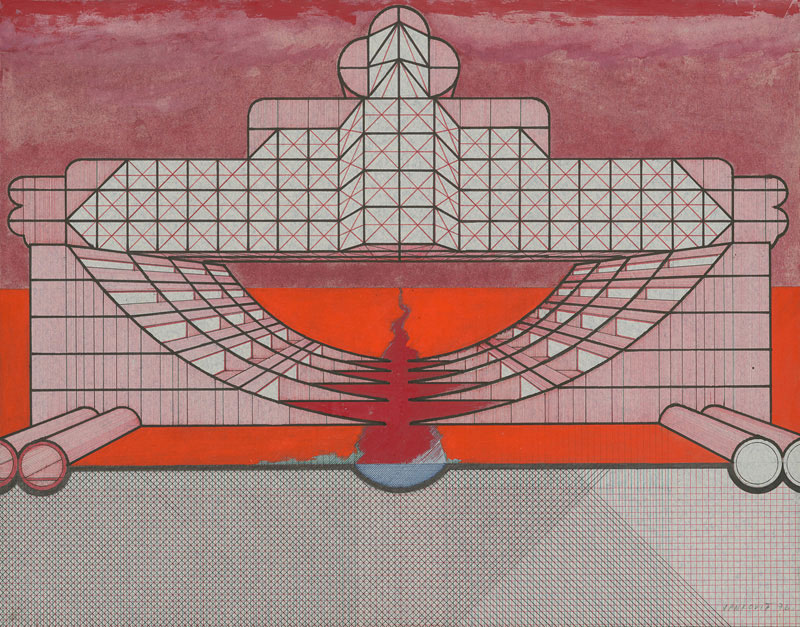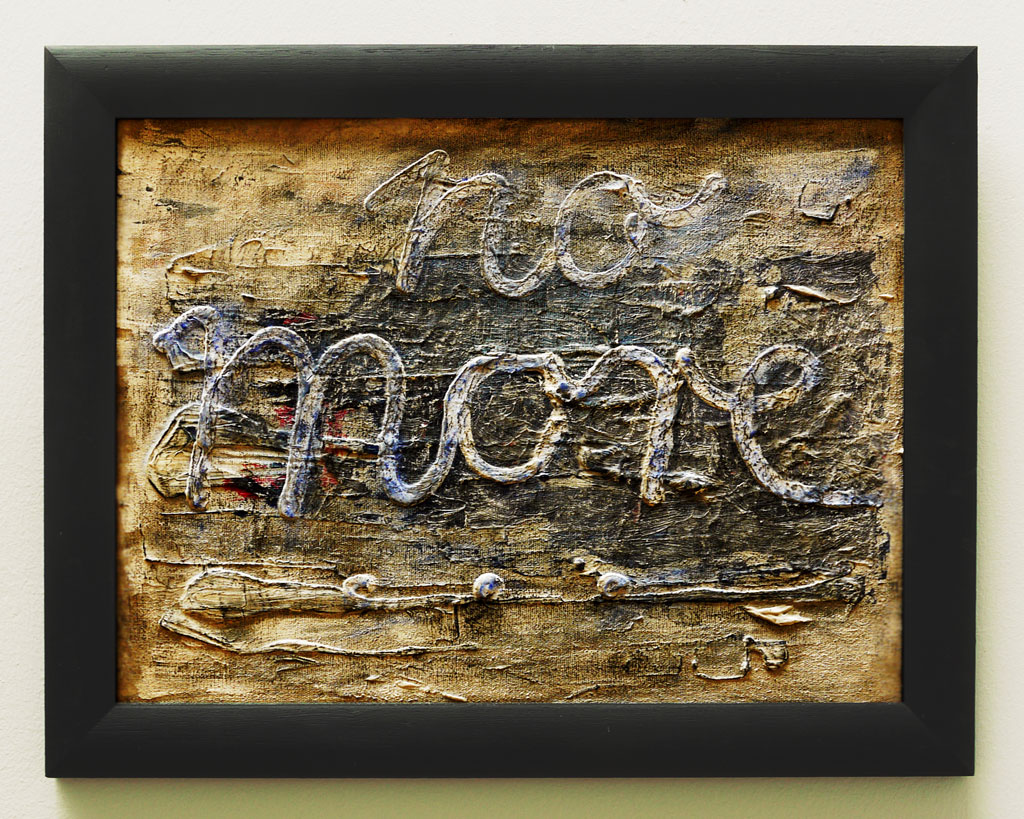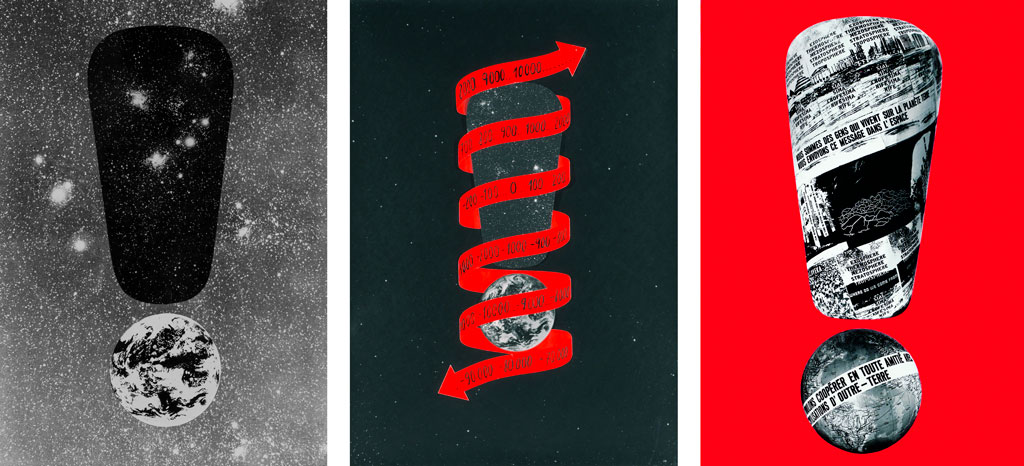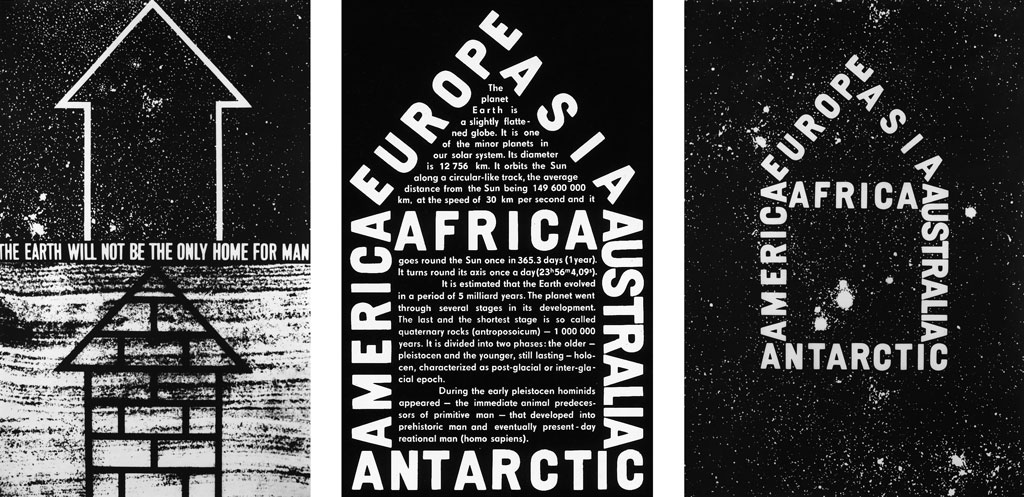ART CITIES:Budapest-SIGNAL
 The arrival of conceptual art in the early 1970s was associated with the shift of interest from aesthetic and material qualities of artworks towards personal, social, historical and often also theoreticizing contexts. In contrast to the art scene in the West, the conceptual approach of artists in Czechoslovakia was motivated by a more personal search for the essence of the relationship between artist and art, at the artistic level as well as the political-ethical, social or even ecological level.
The arrival of conceptual art in the early 1970s was associated with the shift of interest from aesthetic and material qualities of artworks towards personal, social, historical and often also theoreticizing contexts. In contrast to the art scene in the West, the conceptual approach of artists in Czechoslovakia was motivated by a more personal search for the essence of the relationship between artist and art, at the artistic level as well as the political-ethical, social or even ecological level.
By Efi Michalarou
Photo: Ludwig Museum Archive
The exhibition “SIGNAL – the Story of (Post)Conceptual art in Slovakia” introduces one of the crucial tendencies present in Modern and Contemporary Slovak art. It focuses on the origination of and the developments in Conceptual and Post-Conceptual Art from the horizon of the past fifty years in Slovakia, from the alternative unofficial scene of the 1960s as far as to the legal artistic platform after 1989. The exhibition looks at the birth and evolution of Slovak art from the mid-1960s until the present day. In so doing, it shows the broader contexts that gave rise to Slovak Conceptual art in 1964–1965 while also emphasizing the continuity of this form of visual thinking throughout the succeeding generations of artists. The exhibition’s approach is neither linear nor based on a generational classification, but instead presents its information in four main thematic sections representing the primary artistic strategies for the past more than fifty years: TEXTmania (Text-based visual fields), The Zero Gestures (The rebellious gesture fulfils), The Indoor Cosmos (A journey through a paper universe), Redefining the Image (The digital impact). Conceptual thinking emerging in the 1960s was not merely one of many strands of modernism, but a fundamental breakthrough in the structure of how art is defined and in the status and perception of the artifact – programmatically creating borderline “stalker” zones and pioneer fields of exploration. Instead mimesis, depiction of a scene, a static artifact – these give way to a new, non-iconic space and time, a different definition of the substance of art language, or anti-art: postulates, manifests, records, texts, events and activities. We can naturally observe generational waves on the timeline, developing under different social and political conditions – on the alternative, unofficial scene before 1989, and the continuation afterwards by the younger generation in the era’s changing paradigms and worldviews. In this light of a functioning “intel-net” we can imagine the development of conceptual and post-conceptual approaches in three generational stages: the crucial artists of Slovak conceptual art Slovakia – establishing this visual language, the post-conceptual approaches in the 1990s – redefining conceptual thinking, the new generation of artists after 2000 – new “post-media” strategies and approaches, incorporating digital and electronic media. Blažej Baláž’s practise as an artist is usually associated with political art, environmental, activist, mail-art and neo-conceptualism. After 1988 he began working with text as art, neo-conceptual and post-conceptual texts (intext, outtext). Oscillating between figurative and abstract forms Jozef Jankovič’s works of the 1960s include characteristic motifs of fragmented, deformed and atrophied body parts. Another recurrent motif is the imprisonment of his faceless human forms in metallic structures or under colored polyester layers on canvas, in nets or in a fragile state of balance. Petra Feriancová’s work often embraces pre-existing objects, images, texts and collections. Her interventions make manifest the act of affective interpretation, carried out by each person and shaped by their unique life experience, which occurs independently of an object, image or text’s original meaning. Among other ideas, her work explores eternal returns, continuous transformations touching religious, mythological, political, autobiographical references, corporeality as well as airy, intangible matters. Stano Filko was a key figure in the Slovak Avant-Garde, associated primarily with environment, installation, happening, and action. Filko began his artistic practice as a critique of modernist painting, appropriating maps as ready-made canvases and created work influenced by Concrete and Constructivist artists in the mid-1960s. His intricate visual systems created diagrams from everyday objects that were rich in symbolic meaning. In his later series of conceptual statements, “Asociácie” (1968–69), his interest in transcendental philosophy, cosmology, and metaphysics, which could be seen as a response to the Leninist material ideology, was evident in his offset prints that mapped symbolic images and words. Július Koller is one of the most important Eastern European artists working since the 1960s, whose art had and has considerable international significance. Koller‘s work developed in critical distance to the communist authorities and their official art, and it also questioned traditions in modernism and the conventions of the Western art business. Since the mid-1960s he designed “Antihappenings” and “Antipictures”, creating a playfully ironic oeuvre that combined a Dadaist spirit with radical-skeptical stance. Koller painted object-images in white latex and pictures of question marks that became the universal symbol of his critical view of everyday life and reality. Koller saw tennis and table tennis as participatory art forms and here too he combined sport with political statement by demanding that the rules of the game and fair play be adhered to—as the basis of all social action. After the Prague Spring was put down, Koller began his “U.F.O.naut” series that challenged reality with “cultural situations” and utopias of a new, cosmohumanistic culture and future. Peter Rónai belongs to the pioneers of videoart in Slovakia and is a multimedia artist working especially on the field of photography, video, pc graphic and multimedia installations in which he often works with self-portrait and its deformation using postmodern and neo-conceptual strategies. In “Moscow dada” Rónai has chosen not very typical medium for his work – sergraphy, but the typical of him is the self-portrait, its deformation and ironizing, as well as references to the art history and socio-political situation. The artist sealed the eyes with two boxes evoking the newspaper cutting written with “DA” in Russian alphabet meaning “YE” in the photo of his own face (which he also uses later in his works. The scene reminds us of covered eyes in black or blurred faces in the newspaper so that the person cannot be identified. Rónai supresses and ironizes his personal identity, brings the uncertainity and ambiguity, depersonalizes himself from the relationship with the percipient of the work, blurres the details of the artwork to the viewer and at the same time gives his authorial viewpoint. We have to understand the artwork from the viewpoint of period of its origin as the reaction to the former regime in Czechoslovakia which blindly followed the directions from the Soviet Union. Peter Rónai connected the criticism of the system with wit and personal view (what was not tolerated at that time) referring to Dadaism which primarily involved and concentrated on the unreasonable, absurdity, denying of the official art forms, absolute creative freedom, redemption of the things, the common relationships and their subsequent embedding into completely new and unexpected contexts. Rudolf Sikora is a key figure in Slovak conceptual art. He deals with the most fundamental issues regarding the existence of man and the world in the context of post-modern thinking. In contrast to foreign representatives of artistic trends, who took part in important exhibitions on the international scene before 1968, he developed his work within the second wave of Slovak conceptualism in forced isolation from the surrounding world.
Participating artists: Blažej Baláž, Cyril Blažo, Stano Filko, Petra Feriancová, Viktor Frešo, Jozef Jankovič, Michal Kern, Martin Kochan, Július Koller, Marek Kvetan, Ján Mančuška, Roman Ondak, Monogramista T.D , Rudolf Sikora, Pavla Sceranková, Péter Rónai and Jaro Varga.
Info: Ludwig Museum-Museum of Contemporary Art, Komor Marcell u. 1, Budapest, Duration: 19/4-23/6/19, Days & Hours: Tue-sun 10:00-20:00, www.ludwigmuseum.hu





